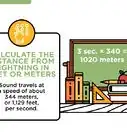This article was co-authored by Direct Relief. Direct Relief is an award-winning humanitarian aid organization, active in all 50 states and more than 80 countries. They focus on helping people affected by emergencies and natural disasters. Direct Relief has been highly rated by Charity Navigator, GuideStar, and the Center for High Impact Philanthropy at University of Pennsylvania, for their effectiveness, efficiency, and transparency.
This article has been viewed 53,377 times.
Hurricanes are one of the fiercest displays of nature’s power and, in some cases, the best course of action is to evacuate out of their path. If you live near to a coastal area, go ahead and make an evacuation plan with your family. Deciding where you will go and how you will get there will take some of the pressure off. During an actual evacuation, and if you choose to return home afterwards, pay attention to official instructions and be careful.
Steps
Creating a Disaster and Evacuation Plan
-
1Make a plan with your entire family involved. Everyone who will need to evacuate in the event of an emergency should be present as you talk about the plan and what it should include. Call a family meeting and include children in the discussion. If you intend to coordinate your evacuation with distant family members, give them a chance to offer suggestions, too.[1]
- If someone can’t participate in the initial discussion, give them a copy of a draft version of your evacuation plan and ask for their advice.
- Keep the conversation appropriate to the age and abilities of each person. Small children, for example, might not be able to help with deciding which shelter to choose, but they can tell you what toys they’ll need to take to be more comfortable.
-
2Determine how you’ll receive emergency alerts and warnings. A weather radio, which runs on batteries, is a great way to stay up-to-date in the event of a hurricane. It typically broadcasts updates from the National Weather Service office on a continual loop. Sign up for text, email, or even Twitter alerts from local emergency agencies, too.[2]
- For example, reach out to the Federal Emergency Management Agency (FEMA) or your local police department to see if they offer electronic disaster alerts for your area.
- Keep fresh batteries in your radio and make sure to have extras on-hand in case they die out. In the event of a hurricane, you’ll end up listening to your weather radio a great deal.
- While text and electronic alerts can be helpful, do not count on the reliability of cell service during a hurricane evacuation.
Advertisement -
3Select at least 3 sheltering locations. If you live near a coastline and need to evacuate from a hurricane, you may need to travel more than 300 miles (480 km) to find adequate shelter. Contact government authorities in your area, such as FEMA, to see what mass shelters are available to you in the event of a hurricane. Call hotels in possible destination cities to inquire about rates and make a reservation if you are sure of your evacuation date.[3]
- If you are involved in a church or other organization, inquire about their plans in the event of a hurricane. You might find that they have a plan in place to set up a shelter at a specific location.
- Don’t discount the possibility of staying with friends or relatives. This option is a great deal cheaper than a hotel and will give you more privacy than a mass shelter.
- Consider how much space you’ll need and your budget as well. If you are travelling with a large family, a mass shelter will be the cheaper option. However, if you are travelling with a pet, a hotel might be more expensive, but you’ll likely get to keep your animal with you.
-
4Map out your potential evacuation routes. In the event of an evacuation, the roads will likely be flooded with people trying to leave the area. For each shelter destination, come up with 2-3 different ways of getting there. This may mean taking different highway routes or even going with public transportation instead.[4]
- Invest in a good map app and think about taking backroads for some of the way to get away from traffic if you can.
- Write down general directions for each of your routes, so that you won’t be completely reliant on your phone, in case it dies or loses service.
- Check with local emergency officials to see what evacuation routes are suggested for your area. Taking an official route might save you time and be safer.
-
5Establish a family and household communication plan. If your family evacuates from a hurricane, decide how they will communicate or contact one another to get ready. Create a phone chain list to determine who is responsible for contacting who. Decide if talking or texting will be your primary contact type.[5]
- It’s also a good idea to set a standard response time to keep anyone from getting overly worried. For example, if you are a family member and receive the text message “Evacuate” from another family member, then you need to respond in less than 30 minutes.
- This is an especially important step if you have an extended family to evacuate or if you live in a large city where it might take a while to get everyone together.
-
6Make an evacuation kit. Your emergency kit should be stocked with items that would make it possible for you, and your family, to survive for at least 72 hours without assistance. Place all of the items in plastic storage bags to protect them and they should all go in a duffle bag(s) or portable bin(s).[6]
- Your kit should include: 3 days of non-perishable food for each person; 3 gallons of water per person; flashlight; extra batteries; first aid kit; all electronics chargers; maps; financial and personal documents; prescription medications; personal toiletry items; changes of clothes.
- Create a separate car emergency kit as well. It should include a flashlight, signal flares, jumper cables, and perhaps extra gallons of gas. It is common for gas stations to run out during an evacuation.
- Good examples of evacuation food would include granola bars, dried fruit, or crackers.
- Bring your insurance documents and anything that might be irreplaceable, such as an original birth certificate or social security card.
Evacuating Successfully and Safely
-
1Follow the instructions of local officials. As you are evacuating, pay close attention to your weather radio, car radio, electronic alerts, and any roadway signage. Officials might alter allowed evacuation routes depending on weather or traffic conditions. They might also pass along updated sheltering information.[7]
- If you are driving, officials might also create roadblocks on the way or place signs near the road to pass along information.
-
2Drive courteously. Watch out for road hazards caused by high winds, such as fallen trees or downed power lines. Stick to the speed limit, so that you’ll have plenty of time to stop if a hazard appears. If you feel fatigued while driving, pull over and take a short break.
-
3Bring your pets along. If you leave your pets behind, they might get injured when the hurricane hits. Depending on the shelter, your pets might be able to stay with you. You can also talk with disaster officials about pet-specific accommodations on the evacuation route. Carry your pet’s food, toys, general supplies, and medications with you as part of your emergency kit.[8]
- Sometimes vets or charities in evacuation route cities will agree to temporarily house and care for the pets of evacuees. For that reason, it’s a good idea to carry copies of your pet’s vaccinations.
- If you have large animals, such as horses, on your property you can make plans to evacuate them or take precautions that they’ll have shelter if the hurricane hits.
Taking Action after Evacuating
-
1Return only after getting clearance from emergency officials. It’s obviously tempting to head back to your home as quickly as possible, but it may not be safe. Stay in contact with officials and wait until they’ve cleared your particular area for returns. Then, follow any official regulations that limit the route you can take home or the amount of time that you can spend there.[9]
- For example, if your area was hit by a hurricane, officials might limit resident visits to daytime hours to lessen the possibility of looting or crime.
-
2Use caution when removing or repairing any damage. Hurricanes can leave power lines down and dangerous debris, such as sharp wood shards, all over the place. Take your time as you clean up your place and reach out to others, like returning neighbors, for help. If you’ve sustained water damage, then consider contacting a remediation company.
-
3Re-pack your emergency supplies. As soon as you get home and get settled, unpack your supply kits and inventory them. Replace any supplies that are missing with fresh ones and check the expiration dates on everything. This will ensure that you’re safe if another evacuation order goes through.
Expert Q&A
-
QuestionWhat should you put in your hurricane evacuation kit?
 Direct ReliefDirect Relief is an award-winning humanitarian aid organization, active in all 50 states and more than 80 countries. They focus on helping people affected by emergencies and natural disasters. Direct Relief has been highly rated by Charity Navigator, GuideStar, and the Center for High Impact Philanthropy at University of Pennsylvania, for their effectiveness, efficiency, and transparency.
Direct ReliefDirect Relief is an award-winning humanitarian aid organization, active in all 50 states and more than 80 countries. They focus on helping people affected by emergencies and natural disasters. Direct Relief has been highly rated by Charity Navigator, GuideStar, and the Center for High Impact Philanthropy at University of Pennsylvania, for their effectiveness, efficiency, and transparency.
Humanitarian Aid Organization Make sure you have things like food or snacks, water, personal care items, clothes, chargers, and documents you need or can't replace, like insurance documents. Most importantly, remember your prescription medications, medical supplies, and important medical records.
Make sure you have things like food or snacks, water, personal care items, clothes, chargers, and documents you need or can't replace, like insurance documents. Most importantly, remember your prescription medications, medical supplies, and important medical records.
Warnings
- Try to stay as calm as possible before, during, and after an evacuation. Everyone will be stressed, and tempers might flare up, so keeping your cool will create a better experience for you.⧼thumbs_response⧽
References
- ↑ https://www.ready.gov/make-a-plan
- ↑ https://www.ready.gov/alerts
- ↑ https://www.ready.gov/shelter
- ↑ https://www.ready.gov/shelter
- ↑ https://www.ready.gov/make-a-plan
- ↑ https://www.ready.gov/build-a-kit
- ↑ https://www.ready.gov/evacuating-yourself-and-your-family
- ↑ https://www.ready.gov/animals
- ↑ https://www.ready.gov/evacuating-yourself-and-your-family



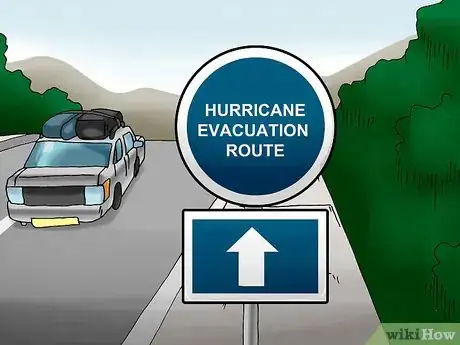

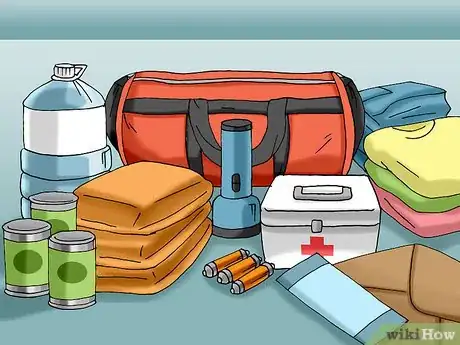
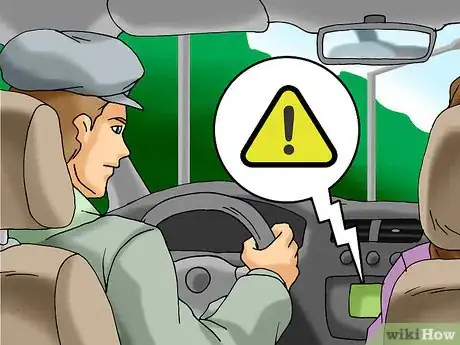
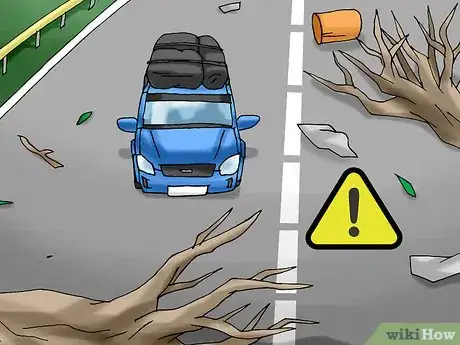






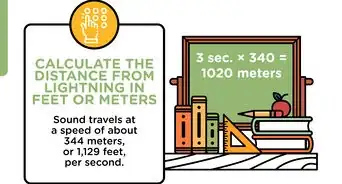







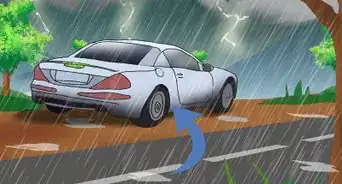

-Step-13.webp)




